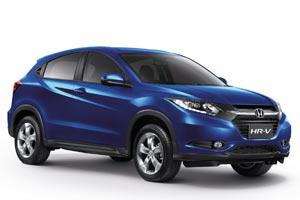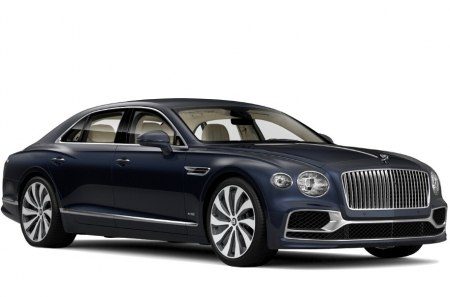
Honda HR-V 1.6 i-DTEC Executive
Content
The HR-V name has a long history with Honda. The first hit the roads back in 1999 and even then it was really such a popular crossover, and even then it was the little brother of the larger CR-V, including the all-wheel drive it got from it. ... You could also imagine it with three doors. The first feature of the new HR-V, which hit the roads less than a decade after saying goodbye to the former, has, and the latter no longer. This is not even surprising, because the HR-V has grown a bit, and it can be safely compared to the original CR-V in size.
Inside too, but not quite. It is true that there is a lot of room in the rear seats (besides the heads, there might be a better competitor here), but Honda engineers (or they may be to blame for the marketing) achieved this with a cheap but not the best trick: longitudinal displacement of the front seats is inappropriate. short, which means that for taller drivers driving is not only very little, but somewhere from 190 centimeters (or even less) is also not enough. We rarely have senior members of the editorial board pulling the steering wheel towards the dashboard so that their arms are not bent too much, and their knees still have nowhere to put. It's a shame, because even if the longitudinal offset were about 10 inches more (in the opposite direction, of course), we could still write the same roominess claims at the rear.
This problem is also the HR-V's biggest downside, and while it may (or will) scare off drivers who are too tall, everyone else will be happy. The rest area in the front seats could be slightly longer (for better hip support), but overall they are reasonably comfortable and the seats are pleasantly high as a crossover should be. The sensors in front of the driver are not transparent enough, as the speed sensor is linear and therefore not accurate enough at city speeds, and there is a lot of unused space in its center (where, for example, a digital speed display can be installed). Even the right graph meter is underutilized because its resolution is too low and the data it displays can be better tuned.
Executive means that the Honda Connect infotainment system with its large 17 cm (7-inch) screen (of course touch-sensitive and can recognize multi-finger gestures) also has navigation (Garmin) and runs the Android operating system in the background 4.0.4 .88 - there are still few applications for it. A small minus was attributed to the six-speed manual gearbox lever, in which the skin is sewn so that it burns the driver's palm. The transmission is one of the car's best features: well-calculated, with short, precise and positive gear shift movements. The engine is great too: despite "only" 120 kilowatts (or XNUMX "horsepower"), it feels like it's much more powerful (again, because of the gearbox) and also works great at highway speeds. Better could be only soundproofing not only the engine, but also the bottom of the car. If you blame the engine for too much noise, then its consumption, of course, cannot be considered a minus.
Given its liveliness, we expected fuel consumption to be higher, but our normal round car finished with 4,4 liters per 100 kilometers, which is a commendable number. The test fuel increased the mileage on the highway above six liters, but moderate drivers will easily put up with a figure starting at 5 ... depending on what kind of car it is) fairly accurate. Executive's rich equipment means not only navigation, but also a good array of electronic safety aids: automatic braking at city speeds comes standard on all equipment, and the Executive also has (oversensitive) pre-collision warning, lane departure warning, road traffic. recognition and much more. There is, of course, automatic dual-zone air conditioning, cruise control and a speed limiter. On the other hand, it is interesting that, despite such equipment, the protection of the luggage compartment is nothing more than a net stretched on a wire frame (and not a roller or shelf).
The luggage compartment can, of course, be enlarged by folding down the rear seats, and this is where Honda's rear-folding system has proved its worth. It's really simple, but at the same time (along the flat bottom of the trunk) it also offers the possibility to simply raise part of the seat and thus get ample space between the front and rear seats, which comes in handy for hauling wider items. . So the Honda HR-V turned out to be an interesting and (just not too much variety) useful vehicle that could easily serve as a first family car – but of course you'll have to put up with Honda's prices. Unfortunately, it is not very profitable compared to competitors. But this is a disease (or defect) that we are already used to with this brand.
Душан Лукич photo: Саша Капетанович
Honda HR-V 1.6 i-DTEC Executive
Basic data
| Base model price: | 24.490 € |
|---|---|
| Test model cost: | 30.490 € |
| Power: | 88kW (120 KM) |
| Guarantee: | General warranty 3 years or 100.000 km, mobile assistance. |
Cost (up to 100.000 km or five years)
| Regular services, works, materials: | NP € |
|---|---|
| Fuel: | 4.400 € |
| Tires (1) | 1.360 € |
| Loss of value (within 5 years): | 10.439 € |
| Compulsory insurance: | 2.675 € |
| CASCO INSURANCE (+ B, K), AO, AO + | 6.180 ( |
| Calculate the cost of auto insurance |
Technical information
| engine: | 4-cylinder - 4-stroke - in-line - turbodiesel - front mounted transversely - bore and stroke 76,0 × 88,0 mm - displacement 1.597 cm³ - compression 16: 1 - maximum power 88 kW (120 hp) at 4.000 rpm – medium piston speed at maximum power 11,7 m/s – specific power 55,1 kW/l (74,9 hp/l) – maximum torque 300 Nm at 2.000 rpm – 2 camshafts in the head (timing belt)) - 4 valves per cylinder - common rail fuel injection - exhaust gas turbocharger - charge air cooler. |
|---|---|
| Energy transfer: | front wheel motor drives - 6-speed manual transmission - gear ratio I. 3,642 1,884; II. 1,179 hours; III. 0,869 hours; IV. 0,705; V. 0,592; VI. 3,850 – differential 7,5 – discs 17 J × 215 – 55/17 R 2,02 V, rolling circumference XNUMX m. |
| Capacity: | top speed 192 km/h – 0-100 km/h acceleration 10,0 s – average fuel consumption (ECE) 4,0 l/100 km, CO2 emissions 104 g/km. |
| Transportation and suspension: | crossover - 5 doors, 5 seats - self-supporting body - front single suspension, leaf springs, three-spoke cross rails, stabilizer - rear axle shaft, coil springs, stabilizer - front disc brakes (forced cooling), rear disc brakes, ABS, rear wheel electric parking brake (switch between seats) - rack and pinion steering wheel, electric power steering, 2,6 turns between extreme points. |
| Mass: | empty vehicle 1.324 kg - permissible total weight 1.870 kg - permissible trailer weight with brake: 1.400 kg, without brake: 500 kg - permissible roof load: 75 kg |
| External dimensions: | length 4.294 mm – width 1.772 mm, with mirrors 2.020 1.605 mm – height 2.610 mm – wheelbase 1.535 mm – track front 1.540 mm – rear 11,4 mm – ground clearance XNUMX m. |
| Inner dimensions: | longitudinal front 710-860 mm, rear 940-1.060 mm - front width 1.460 mm, rear 1.430 mm - head height front 900-950 mm, rear 890 mm - front seat length 510 mm, rear seat 490 mm - luggage compartment 431 - 1.026 365 l – handlebar diameter 50 mm – fuel tank XNUMX l. |
Our measurements
| Measurement conditions: T = 6 ° C / p = 1.030 mbar / rel. vl. = 42% / Tires: Continental Winter Contact 215/55 R 17 V / Odometer status: 3.650 km | |
| Acceleration 0-100km: | 10,7s |
|---|---|
| 402m from the city: | 17,6 years ( 127 km / h / km) |
| Flexibility 50-90km / h: | 8,3s (IV) |
| Flexibility 80-120km / h: | 10,8s (V) |
| test consumption: | 4,4 l / 100km |
| Fuel consumption according to the standard scheme: | 6,7 l / 100km |
| Braking distance at 100 km / h: | 46,1m |
| AM table: | 40m |
| Noise at 90 km / h in 6rd gear | 62dB |
| Noise at 130 km / h in 6rd gear | 66dB |
Overall rating (315/420)
If the HR-V were a little cheaper, it would be much easier to forgive small mistakes.
Exterior (12/15)
The front end of the car is unmistakably Honda, the rear could have been more ingenious in the designers' opinion.
Interior (85/140)
The front is too cramped for taller drivers, and there is plenty of room in the back and trunk. Counters are not transparent enough.
Engine, transmission (54
/ 40)The engine is lively and economical, while the transmission is sporty, fast and precise.
Driving performance (58
/ 95)It's hard to write that the HR-V drives like a Civic, but it is comfortable enough nonetheless and doesn't lean too much.
Performance (29/35)
In practice, the engine runs much faster than one would expect given the numbers on paper.
Security (39/45)
If you don't opt for the most basic version of the HR-V, you will have a good stock of safety accessories for this class.
Economy (38/50)
Hondas aren't cheap, and the HR-V is no different.
We praise and reproach
engine
Transmission
back space
price
too little front space

